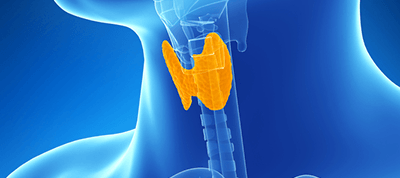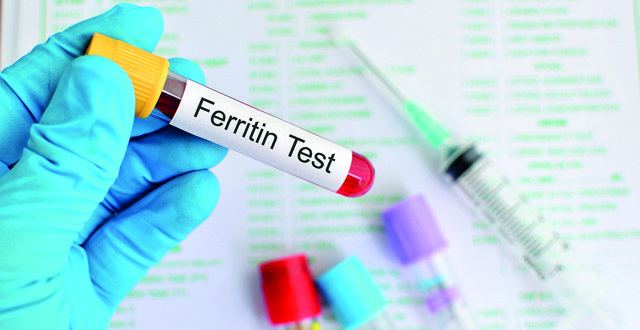<h3 class=”p1″>Introduction</h3> <p class=”p2″><span class=”s1″>The management of pain is an </span>essential aspect of comprehensive <span class=”s1″>cancer care.</span>
<p class=”p2″><span class=”s1″>The patient case report in this article highlights some of the challenges faced in effective control of complex cancer pain. The case involved frequent reassessment of pain and re-establishment of goals, multiple opioid rotations to confer best analgesia balanced with minimising side-effects, the addition of adjuvant analgesic agents and the consideration and use of non-phar- macological pain management strategies. It highlights the importance of a multidisciplinary and multimodal approach in optimising pain control in patients with cancer, as well as continuous communication and coordination between disciplines to ensure quality care.</span>
<p class=”p2″><span class=”s1″>The burden of cancer pain cannot be overlooked. A majority of cancer patients, 50-90 per cent, will experience pain at some stage </span>in the disease trajectory. More than 80 per cent of patients with advanced metastatic disease are reported to suffer pain, predominantly caused by local tumour infiltration and inflammation of surrounding tissues and structures. Around 24-60 per cent of patients receiving treatment for cancer have pain as a result of their treatment, including surgery, chemotherapy and radiotherapy. Cancer pain has been shown to cause sig- nificant psychosocial distress in patients, as well as significant resource challenges in healthcare.
<p class=”p2″><span class=”s1″>Multiple challenges arise with both the classification and management of cancer pain. Cancer pain often presents as a mixed pain comprising both nociceptive and neuropathic components. These mechanisms involve inflammatory, neuropathic, ischaemic and compressive features at various sites. It rarely presents as a pure neuropathic, visceral or somatic pain syndrome.</span>
<p class=”p2″><span class=”s1″>Its development over time is complex and varies depending on type of cancer, treatment regimes, concurrent comorbidities and individual patient circumstances.</span>
<p class=”p2″><span class=”s1″>In an attempt to describe the all-encompassing nature of pain, in 1964 Dame Cicely Saunders, the pioneer of modern palliative clinical practice, coined the concept of “total pain”. She suggested that pain has physical, psychological, social, emotional and spiritual components that make up the “total pain” experience, with the contribution of each component specific to an individual’s situation.</span>
<p class=”p2″><span class=”s1″>For the majority, physical pain is only one of several symptoms of cancer. Physical aspects of pain cannot be adequately assessed or treated in isolation from other aspects of distress.</span>
<p class=”p2″><span class=”s1″>To further describe the over-all pain experience for patients, Strang et al (1992) reviewed the emotional and social consequences of cancer-related pain. Over half of the study population de- scribed depressive pain-associated symptoms, correlating highly with pain intensity. Over half experienced significant anxiety as a result of pain. Almost all reported decreased physical and social activity and the level of decrease correlated significantly with pain severity.</span>
<p class=”p2″><span class=”s1″>Healthcare has traditionally focused on a biomedical model of cancer pain management where other dimensions of, or contributors to pain, are frequently not acknowledged or addressed. Assessing and attending to the psycho-social needs of a patient should be an integral part of quality pain assessment and management.</span>
<p class=”p2″><span class=”s1″>Comprehensive pain assessment allows for the characterisation of the multiple dimensions of pain, including aetiology and impact on quality-of-life and can help clarify extent of disease and plan treatments.</span>
<p class=”p3″>Pharmacological management of cancer pain <span class=”s1″>The World Health Organisation </span>(WHO) analgesic ladder has been the cornerstone of pharmacological management of cancer pain since its development in 1986, and has been extensively validated in the literature. With effective pain assessment and a logical step-wise approach to analgesia, it has been shown to be effective in achieving adequate pain control in up to 71-100 per cent of patients with cancer pain.
<p class=”p2″><span class=”s1″>When using this ladder, an analgesic regime should be individually tailored to the degree and severity of pain corresponding to the appropriate step on the ladder; the cause of pain will influence choice of analgesic (<strong>Table 1</strong>). Despite recent controversies concerning the effective- ness of step two of the analgesic lad</span>der, with careful consideration and assessment of an individual’s pain, it remains the gold-standard framework for cancer pain management.
<h3 class=”p1″>Opioid analgesia</h3> <p class=”p2″><span class=”s1″>Opioids are the mainstay of any pharmacological cancer pain management strategy. The key to success in their use involves regular reassessment of pain and careful analgesic titration balanced with minimisation of side effects, and when necessary their use in combination with adjuvant medication.</span>
<p class=”p2″><span class=”s1″>For management of moderate to severe pain, the opioids morphine sulphate, oxycodone, hydromorphone and methadone have equivalent levels of efficacy and tolerability. All are reasonable first choices as an opioid analgesic, however, given methadone’s complex phar- macokinetics, it is only used with specialist guidance.</span>
<p class=”p2″><span class=”s1″>In patients with chronic cancer pain, a combination of slow-release preparations and a corresponding short-acting preparation for break-through pain are required. This is due to genetically determined variability in opioid pharmacokinetics, resulting in differing levels of opioid tolerance and side effects between patients.</span>
<p class=”p2″><span class=”s1″>As in the case report patient’s case, opioid rotation is sometimes necessary to confer greater analgesic benefit with minimisation of side effects.</span>
<p class=”p2″><span class=”s1″>Opioid rotation is necessary in approximately 20 per cent of patients with cancer and can lead to improvement in pain in up to 50 per cent of patients with a previous poor response. As stated, cancer pain results from a complex mix of pain mechanisms, and opioids, while remaining first-line in treatment, do not always provide adequate control in isolation.</span>
<h3 class=”p1″>Non-opioid analgesia</h3> <p class=”p2″><span class=”s1″>An adjuvant analgesic agent is one in which its primary role is in the management of a symptom oth</span>er than pain, but has been shown to have an effect in certain painful conditions. Medications that are commonly used in combination with opioids can prove beneficial in individualised treatment, however, response rates are frequently limited or may only provide partial relief at maximum tolerated doses.
<p class=”p2″><span class=”s2″>Antidepressants/anti-epileptics </span><span class=”s1″>The International Association for </span>the Study of Pain defines neuropathic pain as pain that arises as a direct consequence of a lesion or diseases affecting the somatosensory system.
<p class=”p2″><span class=”s1″>Nerve damage leads to abnormal activation of pain pathways and increased firing of first-order neurons. This allows for neuronal hyper-excitability and spontaneous activity at the site of injury. There are neuro-chemical and physiological changes in the dorsal horn of the spinal cord that subsequently allows pain impulses to travel unopposed. Second and third order neurons can develop a ‘memory’ of pain, which causes sensitisation (a process termed ‘wind-up’). Neuropathic agents work to suppress nerve activity and firing. Neuropathic pain mechanisms are present in up to 40 per cent of patients with cancer pain.</span>
<p class=”p2″><span class=”s1″>The burden of neuropathic pain is significant. Studies by Fainsinger (2010) and Raymont (2011) found that in comparison to nociceptive pain, cancer patients with neuropathic pain are more likely to receive more oncological treatment, more likely to require higher doses of opioids and adjuvant analgesia, and report a poorer quality-of-life and performance status, despite having no difference in disease status or overall survival.</span>
<p class=”p2″><span class=”s1″>Neuropathic cancer pain management remains problematic and challenging, both in terms of degree </span>of analgesia, polypharmacy and risk <span class=”s1″>of adverse effects. Neuropathic pain in general does not tend to respond fully to opioids alone.</span>
<p class=”p2″><span class=”s1″>Because cancer pain typically has </span><span class=”s1″>a significant inflammatory component, it is generally appropri- </span>ate to optimise treatment with an opioid prior to introducing adjuvant analgesics. Both antidepressants and anti-epileptics have an established role in management of neuropathic pain. The choice of agent may also be tailored to play a role in other <span class=”s1″>symptom management, such as anxiety or depression. The effectiveness of various neuropathic agents is measured in terms of numbers needed to treat (NNT).</span>
<p class=”p1″>Gabapentin and pregabalin are the most commonly used anti-epileptics in neuropathic pain and have NNT of 7.2 and <span class=”s1″>7.7 respectively, to give a 50 per cent reduction in pain inten</span>sity. Antidepressants including TCAs and SNRIs have been <span class=”s1″>shown to have a modest effect, with numbers needed to treat of 3.6 for amitriptyline and 6.4 for duloxetine. Much of this evidence is from a non-malignant population, however, evidence has been extrapolated for use in the cancer setting. While nei</span>ther studies nor results are particularly robust, it is reasona<span class=”s1″>ble to consider a trial of an anti-epileptic or antidepressant in combination with an opioid for the management of cancer-related neuropathic pain, with careful monitoring of side effects.</span>
<h3 class=”p2″>Corticosteroids</h3> <p class=”p3″>The case report patient had a significant analgesic response to <span class=”s2″>the addition of corticosteroids. There is a lack of robust evidence </span>in the literature to support their use in cancer pain, however, an<span class=”s1″>ecdotal reports suggest that the effect of steroids can confer sig</span><span class=”s2″>nificant analgesia in individual cases. This can be due to a reduc</span><span class=”s1″>tion in perineural/peritumoural oedema, a decrease in produc- </span><span class=”s2″>tion of inflammatory mediators of pain and inhibition of activity in damaged nerves, as well as having a role in improving appetite and mood, which in turn may have a positive effect on pain tolerance. Guidelines would suggest using the minimal effective dose </span><span class=”s1″>for a short time-period, with close monitoring of adverse effects including proximal myopathy and steroid-induced diabetes.</span>
<p class=”p3″><span class=”s2″>Other pharmacological approaches include paracetamol and </span><span class=”s1″>NSAIDs. Paracetamol is proven effective in the control of mild </span><span class=”s2″>to moderate pain. It is frequently used in combination prepara- </span><span class=”s1″>tions in the second step of the WHO analgesic ladder. There is </span><span class=”s2″>insufficient evidence for adding paracetamol to a strong opioid </span><span class=”s1″>in a cancer setting. NSAIDs can be used alone or in combina- tion with each step on the WHO ladder, taking into account a </span>patient’s cardiovascular, gastrointestinal and renal risk profile.
<p class=”p1″><span class=”s3″>Non-pharmacological management of cancer pain </span>Non-pharmacological options for cancer pain management may provide long-lasting relief of pain when appropriate and should be a consideration for management throughout all stages of a patient’s illness. There may also be a benefit in reducing risk of polypharmacy and adverse events from analgesics and improving overall quality-of-life.
<p class=”p1″>Chemotherapy, immunotherapy and hormonal therapy <span class=”s1″>may all improve pain as a result of directly modifying disease progression. Radiotherapy for pain control from bone metastases or sites of local tumour infiltration is well established and proven in the literature and should be considered even when </span>prognosis is deemed to be relatively short. A single fraction of high-dose radiotherapy to a single site can be beneficial in <span class=”s1″>improving patient tolerance and compliance with treatment.</span>
<p class=”p1″>Other non-pharmacological options may include radioisotope treatment for bone metastases, vertebroplasty and percutaneous cementoplasty. Neurolytic procedures including coeliac plexus blocks/peripheral nerve blocks and intercostal blocks are considerations when other ap- proaches to therapy have been unsuccessful or burdensome to patients. Anecdotal reports suggest positive outcomes, however, again there is a lack of high-quality evid<span class=”s1″>ence to support their use in a cancer setting.</span>
<h3 class=”p2″>Summary</h3> <p class=”p1″><span class=”s1″>Comprehensive assessment and a high-quality, evidence-based approach to cancer pain management is of paramount </span>importance in delivering quality care to affected patients. <span class=”s1″>The negative impact of under- or poorly-controlled pain can </span>be devastating to an individual and have a significant negative impact on their quality-of-life. There is no ‘one treatment suits all’ approach and tailoring treatment to an indi<span class=”s1″>vidual is necessary. As such, all clinicians should have an appropriate knowledge base in pain management and adopt a </span>multidimensional, multimodal approach to patient care. A <span class=”s1″>lack of high-quality research and evidence can in part be at</span>tributed to the difficulties in carrying out randomised controlled trials in a cancer/palliative care patient population. Some of the current evidence-base is anecdotal or extrapo<span class=”s1″>lated from study results in a non-malignant population.</span>
<p class=”p1″>Best practice in the approach to cancer pain management should include consideration of disease-modifying therapy, incorporating oncological, radiation treatment <span class=”s1″>and surgery, as well as consideration of non-disease modifying strategies including pharmacological, psychological, rehabilitative and interventional approaches.</span>
<p class=”p1″><span class=”s1″>The <em>National Clinical Effectiveness Committee’s Guideline for the Pharmacological Management of Cancer Pain </em></span><em>in Adults </em>(2015) provides recommendations to clinicians based on best available evidence in cancer pain manage<span class=”s1″>ment, with the aim of benefiting patients with cancer pain, </span>and improving quality-of-life. The guideline is available and applicable to all healthcare professionals involved in the management of cancer pain and is available in its entirety at <span class=”s4″>http://health.gov.ie/national-patient-safety-of- fice/ncec/national-clinical-guidelines/cpc/.</span>
<p class=”p1″><strong><span class=”s4″>References on request</span></strong>









Leave a Reply
You must be logged in to post a comment.